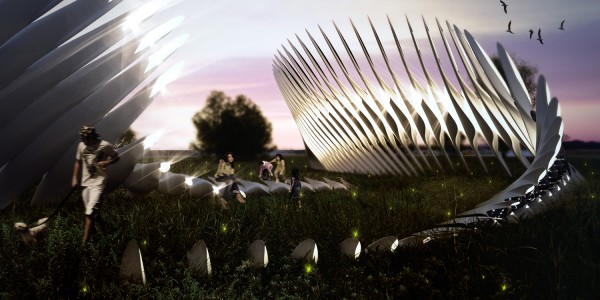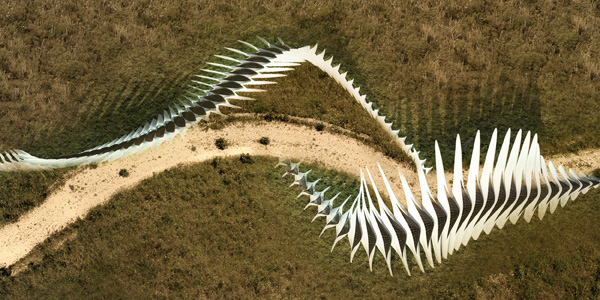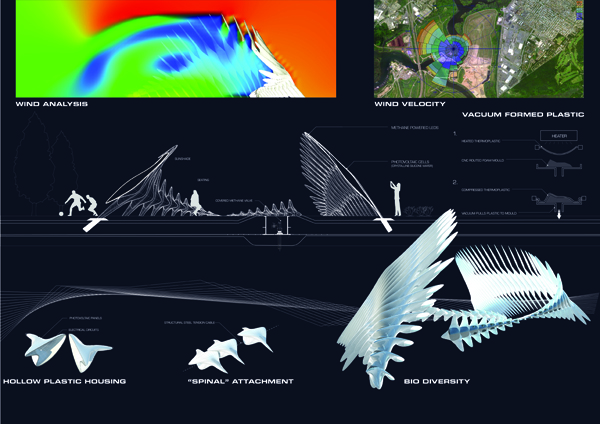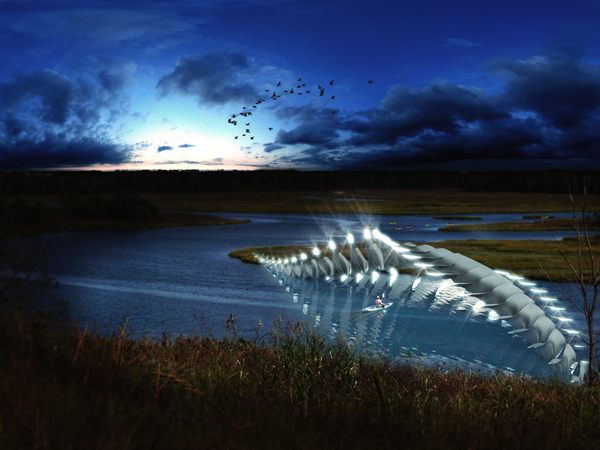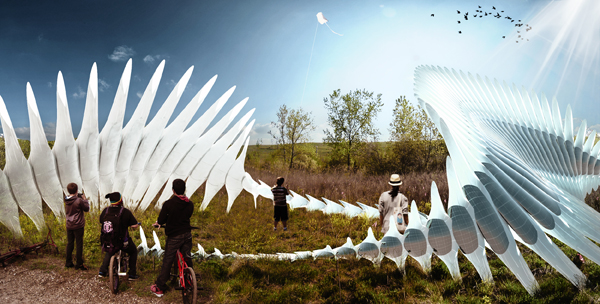Adaptive Mutations is a design predicated on the fact that nature exists not in stasis, but in perpetual flux. Just as life forms in nature evolve to their surroundings, so must our design considerations. “Adaptive Mutations” are the DNA rather than the collective composition, understanding the relationship among discreet modules, rather than the global agenda. Thus, the design situates itself not in physical locations on the site, but at the intersection of a design discussion, open to collaborative adaptation.
This design by Joseph A. Sarafian considers the needs of the meandering Freshkills Park inhabitant. It provides both shading and seating while the photovoltaic panels on the exterior surfaces collect sunlight that is fed directly to the city grid, while also being partially diverted to the local LED’s imbedded in the tips of each module creating a glowing plastic membrane at night. Vacuum packed plastic components are aggregated in a linear path, held taught by a combination of interior steel tension cables and the design’s collective curvature. It is also anchored into the ground with concrete footings at specific locations to avoid uplift. Seating elements are situated over the methane valves to provide a visual cover, yet still allow functional access. Mutations will occur in locations deemed necessary, whether along a footbridge or in a field. Factors determining its location include: maximum sunlight exposure, public access, and wind considerations. All instances provide an approachable, tangible vessel of sustainability that can be both inhabited by the public and provide energy for the city.

